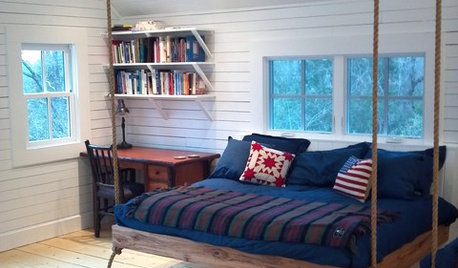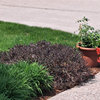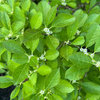Euonymous alata still being sold and recommended?
prairiemoon2 z6b MA
15 years ago
Related Stories

SELLING YOUR HOUSESave Money on Home Staging and Still Sell Faster
Spend only where it matters on home staging to keep money in your pocket and buyers lined up
Full Story
KITCHEN COUNTERTOPSKitchen Counters: Granite, Still a Go-to Surface Choice
Every slab of this natural stone is one of a kind — but there are things to watch for while you're admiring its unique beauty
Full Story
DECORATING GUIDESHemp, Hemp, Hooray! This Superplant May Be Legal Again in the USA
Hemp products are durable, sustainable, antibacterial and much more. Will the plant finally get the status it’s due in the States?
Full Story
MODERN HOMESHouzz Tour: ’50s Ranch Redo Could Be a Keeper
An experienced house flipper puts his creative talents to work on an L.A. remodel designed for his own family
Full Story
LIFECould You Be a Landlord?
Sure, the extra income would be great. But jumping blindly into owning a rental property could be disastrous. Here's what you need to know
Full Story
HOUSEKEEPING10 Problems Your House May Be Trying to Show You
Ignore some of these signs and you may end up with major issues. We tell you which are normal and which are cause for concern
Full Story
LIFE10 Reasons to Be Happy You’re a Renter
Homeownership has many benefits, but there are upsides to not owning a home too
Full Story
REMODELING GUIDESWhy Marble Might Be Wrong for Your Bathroom
You love its beauty and instant high-quality appeal, but bathroom marble has its drawbacks. Here's what to know before you buy
Full Story
MORE ROOMSCould Your Living Room Be Better Without a Sofa?
12 ways to turn couch space into seating that's much more inviting
Full StoryMore Discussions










gardengal48 (PNW Z8/9)
Iris GW
Related Professionals
Carlisle Landscape Architects & Landscape Designers · Beachwood Landscape Architects & Landscape Designers · Piqua Landscape Architects & Landscape Designers · Allentown Landscape Contractors · Belmont Landscape Contractors · Deer Park Landscape Contractors · Essex Landscape Contractors · Fort Hunt Landscape Contractors · Gresham Landscape Contractors · Matteson Landscape Contractors · River Ridge Landscape Contractors · North Aurora Landscape Contractors · Homestead Window Contractors · Barrington Driveway Installation & Maintenance · Lakewood Driveway Installation & Maintenanceprairiemoon2 z6b MAOriginal Author
duluthinbloomz4
prairiemoon2 z6b MAOriginal Author
Iris GW
duluthinbloomz4
ego45
Embothrium
prairiemoon2 z6b MAOriginal Author
Iris GW
WendyB 5A/MA
prairiemoon2 z6b MAOriginal Author
stimpy926